Learning at HTM
Learning is a crucial part of what we do at HTM. Why? The world is changing rapidly. While technology is helping get things done, it is also flooding us with information at an ever increasing rate. Information of ever increasing complexity. Information used to make decisions with rapid and often global impact. How does learning help us deal with this?
Firstly, in order to bring the most value to our clients we need more than just technical skills. We need to be able to understand the whole system our clients operate within, to best support them. This process of understanding requires us to have systems thinking knowledge, advanced communication skills and awareness of the various cultures involved.
Secondly, we need to create a new working style, as the traditional 'command and control' model of the past is no longer suitable for today's workforce. Our people are educated and empowered. In order to create a team where we all help each other get the work done everyday and then spend time creating, we need to makes sure our people have a wide range of skills.
That is where the Foundation Series comes in. The Foundation Series is a set of books that serve as a catalyst for our learning. These books focus on key topics - Developing Personal Mastery, Creating Resilient Organizations, Making Change, Managing Projects, Designing Processes, Systems Thinking, and Getting Things Done. Using the foundation series as a starting point our team learning sessions encourage interaction, provide insight and promote new ideas.
The Foundation Series
Filter by category:
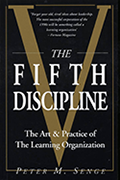
The 5th Discipline: The Art & Practice of The Learning Organization
by Peter Senge
An organization's capacity for learning can be enhanced by five disciplines; personal mastery, mental models, building shared vision, team learning, and systems thinking. The fifth discipline, systems thinking, is the basis of all the other disciplines. This book gives leaders the tools and information to implement systems thinking at their organizations.
Resources:
Article - Leading Learning Organizations by Peter Senge (12 pages)
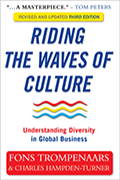 Riding the Waves of Culture: Understanding Diversity in Global Business
Riding the Waves of Culture: Understanding Diversity in Global Business
by Fons Trompenaars, Charles Hampden-Turner
Culture, as an interconnected system of meanings shared by one group, affects how we do business. It is essential for organizations to consider the culture of their people if they want to optimize the business. Riding the Waves of Culture will equip the reader with knowledge of how to enhance interactions in global business.
Resources:
Video - Fons Trompenaars at TEDxAmsterdam (18:53)
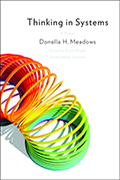 Thinking in Systems: A Primer
Thinking in Systems: A Primer
by Donella Meadows
Humans are wired to understand linear relationships - events connected by cause and effect. But reality is never so simple. Our world is a maze of interconnected and complex systems. Systems thinking replaces traditional analysis methods to help us understand complexity, avoid systems traps, and find leverage points to introduce positive change.
Resources:
Video - Donella Meadows lecture on sustainable systems (23:05)
Video - In A World of Systems (9:22)
Article - Donella Meadows Leverage points (21 pages)
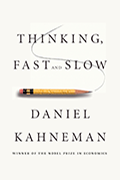 Thinking, Fast & Slow
Thinking, Fast & Slow
by Daniel Kahneman
Our mind contains two systems. The first is the automatic and intuitive system. The second is thoughtful and deliberate. How these systems interact with each other determine how we think and make judgments. By understanding how these two systems work one can learn how to make smarter decisions and avoid falling into traps.
Resources:
Video - Daniel Kahneman, It’s All in Your Head (15:14)
Video - TEDxTalks Dan Ariely, Are We in Control of Our Own Decisions? (17:15)
Video - TEDxTalks The riddle of experience vs. memory (20:00)
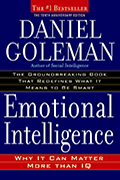 Emotional Intelligence
Emotional Intelligence
by Daniel Goleman
Emotional Intelligence -like IQ- is a predictor of success in academics, work life and private life. Unlike IQ, emotional intelligence can be increased over one’s lifetime. By being able to define and understand emotional intelligence one can learn how it can be used to build a successful life.
Resources:
Video - Daniel Goleman Introduces Emotional Intelligence (5:31)
Video - TEDxTalk Why aren't we more compassionate (13:10)
 Flow: The Psychology of Optimal Experience
Flow: The Psychology of Optimal Experience
by Mihaly Csikszentmihalyi
After deep study into what makes people happy, Csikszentmihalyi identifies a state which he calls "flow". "Flow" is that feeling when you work on a task so intensely that time falls away and it feels effortless. This book describes "flow" and explains how to create an optimal environment for flow to exist.
Resources:
Video - Flow Theory (2:40)
Video - TEDxTalk Flow, the secret to happiness (18:50)
Video - Living in flow - the secret of happiness with Mihaly Csikszentmihalyi at Happiness & Its Causes 2014 (24:24)
 Re-Creating the Corporation
Re-Creating the Corporation
by Russell L. Ackoff
In this book Ackoff applies systems thinking to the management and organization of businesses. He describes a new type of management he calls interactive planning and outlines how it should be applied in the workplace. This book allows you to see the common pitfalls in the current style of management and how to transform your business into one that is more resilient.
Resources:
Video -Russell Ackoff / Studio 1 Network (9:48)
Video -Systems Thinking Speech by Dr. Russell Ackoff (1:10:57)
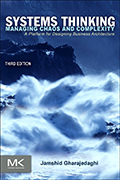 Systems Thinking: Managing Chaos and Complexity - A Platform for Designing Business Architecture
Systems Thinking: Managing Chaos and Complexity - A Platform for Designing Business Architecture
by Jamshid Gharajedaghi
In this book, Gharajedaghi outlines how to define problems and design solutions in an increasingly complex and chaotic environment. The book describes how to use systems thinking principles and iterative design in a business climate.
Resources:
Video - Tom Wujec - Build a Tower Build a Team (6:45)
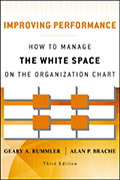 Improving Performance: How to manage the white space on the organization chart
Improving Performance: How to manage the white space on the organization chart
by Geary A. Rummler
Traditional organizational charts create silos, isolated groups within the organization, separated by whitespace. This simplistic view of the organization ignores what is most important: the interactions between groups or the "white space". This book will help readers identify and address core problems in their organizations and improve performance.
Resources:
Video - Tom Wujec - Got a wicked problem? First, tell me how you make toast (9:08)
 A Sense of Urgency
A Sense of Urgency
by John P. Kotter
Globalization and technological breakthroughs have sped up the rate of change. Organizations that become complacent do not survive. It's up to leaders to instill a sense of urgency in the organization to take immediate action on critical items. This books shows the reader how to implement lasting change by creating a real sense of urgency.
Resources:
Video - John Kotter Communicating a Vision for Change (3:36)
Video - John Kotter The Heart of Change (5:18)
Video - John Kotter Resistance to Change (3:36)
 Scrum: The Art of Doing Twice the Work in Half the Time
Scrum: The Art of Doing Twice the Work in Half the Time
by Jeff Sutherland
In a fast paced business climate, continuous improvement and change is essential for any business to thrive. Sutherland tackles this with his methodology "Scrum", in this book he gives the readers a roadmap to create self organizing teams that work highly visibly, without titles, checking in with each other once a day.
Resources:
Article - The Scrum Guide (19 pages)
Video - Jeff Sutherland Breaks Down the Structure of Scrum (05:36)
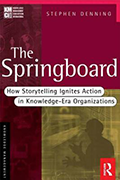 The Springboard: How Storytelling Ignites Action in Knowledge-Era Organizations
The Springboard: How Storytelling Ignites Action in Knowledge-Era Organizations
by Stephen Denning
A powerful narrative is all that's needed to win over the hearts and minds of an audience. Narratives can be used to inspire innovation, motivate employees or to persuade customers. The innovative thinker and communicator, Stephen Denning, introduces and explains his techniques for telling narratives that lead to action.
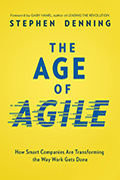 The Age of Agile: How Smart Companies Are Transforming the Way Work Gets Done
The Age of Agile: How Smart Companies Are Transforming the Way Work Gets Done
by Stephen Denning
Agile Management enables teams to adapt and upgrade products and services quickly enough to keep up with rapidly changing technology and customer needs. Agile can be applied anywhere, no matter what product or service the business is producing.
Resources:
Video - Agile Product Ownership in a Nutshell (15:51)
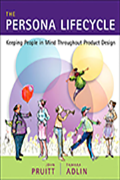 The Persona Lifecycle: Keeping People in Mind Throughout Product Design Interactive Technologies
The Persona Lifecycle: Keeping People in Mind Throughout Product Design Interactive Technologies
by John Pruitt Tamara Adlin
The Persona Lifecycle addresses the “how” of creating effective personas and using those personas to design products that people love. This book offers detailed techniques and tools related to planning, creating, communicating, and using personas to create great product designs.
**At 744 pages, this is no easy read. We recommend Chapter 10: Reality and Design Maps.
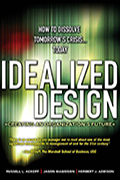 Idealized Design: How to Dissolve Tomorrow’s Crisis…Today
Idealized Design: How to Dissolve Tomorrow’s Crisis…Today
by Russel L. Ackoff
Ackoff describes his method for designing systems and how it can be applied to everything from projects to environmental policy. The idea is this: start with your ideal vision and work backwards. This will stop you from implementing any of your existing problems in the new design. This book helps the reader think up visionary ideas and explains the process to make them a reality.
Resources:
Video - Fast Frames - Russell Ackoff's model (2:05)
Article - Interactive planning and idealized design (15 pages)
Video - Tape of Ackoff's Bell Lab Lecture (29:08)
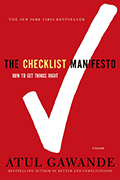 The Checklist Manifesto: How to Get Things Right
The Checklist Manifesto: How to Get Things Right
by Atul Gawande
Despite advances in technology, mistakes happen daily in all fields that require handling massive amounts of knowledge or complex procedures. The solution to reducing errors can be incredibly simple: use a well formed checklist. Reading The Checklist Manifesto will help to create checklists that can improve workflow and reduce errors.
Resources:
Video - How Do We Heal Medicine? (19:19)
 Email us
Email us